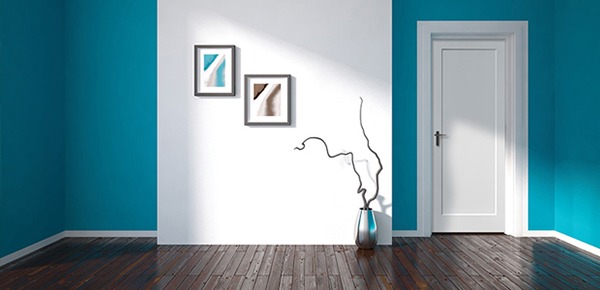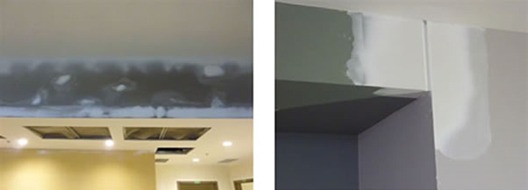Drywall is the most common interior wall surfacing material used in modern construction. Despite its prevalence in the construction industry, achieving an even and uniform finish when painting new drywall can be difficult.
This is mostly due to a difference in texture and porosity between the paper surface and the joint filling compound used. Repairs made after painting work has commenced can create an uneven surface resulting in an irregular and patchy appearance.
Although defects and flaws can look like application errors, the reality is that they have nothing to do with the quality of paint or application methods used.
4 Steps for a Flawless Finish
STEP 1
Ensure proper lighting is in place and that the interior temperature is above 60°F before painting work commences.
In many new construction projects, painting work often begins before the lighting and heat systems have been installed. Proper lighting makes defects more noticeable, and a change in temperature can cause movement in the walls and seams, creating new defects. Repair any surface defects and seal your new drywall before painting commences.
STEP 2
Use a high-quality latex primer sealer
Using a high-quality latex primer sealer when painting new drywall, provides a continuously sealed surface with relatively uniform porosity. In general, primers and topcoats with higher volume solids will do a better job of filling in small surface irregularities as they leave a higher build on the substrate.
STEP 3
Carry out drywall repairs after the prime-coat
Using a high-quality latex primer sealer is an important first step. However, many defects in the drywall are practically invisible until the prime-coat has been applied. This means the drywall contractor will have to return to the job site to make repairs. Remember that these repaired areas will also need to be sealed once again before applying the intermediate coat.
STEP 4
Never make significant drywall repairs after the intermediate coat has been applied.
The variance in surface texture created by applying uneven layers of filler, sealer and intermediate coat across an entire wall is what causes the inconsistent appearance of the finish. Depending on when drywall repairs are made, a single wall could consist of drywall, sealer and intermediate coat in one area, and drywall, sealer, filler, sealer, intermediate coat directly beside it. For this reason, it is advisable to make as many drywall repairs as possible before painting work commences.





